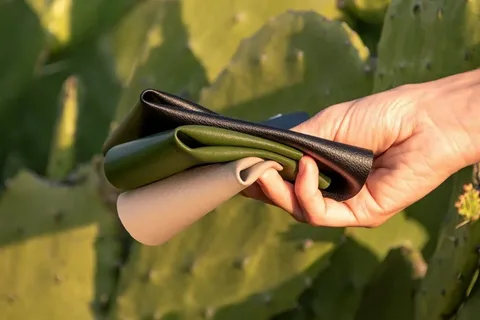Bio-based leather market is at the forefront of a significant transformation within both the fashion and automotive industries, driven by an increasing consumer demand for sustainable and ethical products. As awareness of environmental issues grows, brands are seeking innovative alternatives to traditional leather, leading to the rise of bio-based leathers made from renewable resources.
Understanding Bio-Based Leather
Bio-based leather refers to materials created from natural, renewable sources, designed to mimic the properties of conventional leather. These materials can be derived from various plant-based sources, including pineapple leaves (Piñatex), apple peels, and mycelium from fungi. Unlike traditional leather, which often involves resource-intensive processes such as cattle farming and chemical tanning, bio-based leather significantly reduces the environmental impact associated with leather production.
The benefits of bio-based leather extend beyond sustainability. These materials often require less water and energy to produce and can be biodegradable, contributing to a circular economy. As brands increasingly focus on their environmental footprints, bio-based leather has emerged as a compelling alternative.
Impact on the Fashion Industry
The fashion industry has been one of the earliest and most enthusiastic adopters of bio-based leather. Designers and brands recognize that consumers are becoming more eco-conscious and are actively seeking sustainable alternatives to traditional materials. This shift is prompting a wave of innovation, with numerous fashion houses incorporating bio-based leathers into their collections.
High-profile brands, such as Stella McCartney and Gucci, have led the way in integrating bio-based materials into luxury fashion. These brands demonstrate that sustainability can coexist with high fashion, appealing to a growing demographic of environmentally aware consumers. By adopting bio-based leather, they not only enhance their brand image but also set a standard for the industry.
Innovations in Automotive Interiors
The automotive sector is another key player in the bio-based leather market. As consumers demand greener options in their vehicles, automakers are increasingly integrating bio-based leather into car interiors. This transition not only meets consumer expectations but also aligns with the broader industry goal of reducing carbon footprints and enhancing sustainability.
Leading automotive brands, including BMW and Volvo, have started incorporating bio-based leather in their vehicle designs, transforming interiors while promoting a more eco-friendly image. This integration offers consumers a stylish and luxurious experience without compromising their commitment to sustainability.
The use of bio-based leather in automotive interiors not only enhances aesthetics but also provides a functional advantage. Many bio-based leathers offer durability and ease of maintenance, making them suitable for high-traffic areas in vehicles. As automakers prioritize quality and sustainability, the adoption of bio-based materials is set to become a standard practice.
Challenges to Overcome
Despite its promising potential, the bio-based leather market faces several challenges. One significant hurdle is the perception of quality compared to traditional leather. While advancements in technology have improved the durability and aesthetics of bio-based alternatives, some consumers remain skeptical. Educational initiatives and effective marketing will be crucial in changing these perceptions and highlighting the benefits of bio-based leather.
Another challenge is the initial production cost. The processes involved in creating bio-based leather can be more complex and expensive than traditional leather production, which may deter some brands from fully committing to these materials. However, as demand increases and production scales up, costs are expected to decrease, making bio-based leather more competitive in the market.
The Future of Bio-Based Leather
The future of the bio-based leather market looks promising. Analysts predict that the market could reach USD 1 billion by 2030, driven by increasing consumer demand for sustainable products and ongoing innovations in material science. Regions like North America and Europe are leading the charge in adopting bio-based leather, but emerging markets in Asia-Pacific are also beginning to recognize the potential of these eco-friendly materials.
Innovations in biotechnology and material processing will continue to propel the market forward. Collaborations between fashion designers, automotive manufacturers, and material scientists can lead to groundbreaking products that appeal to both sectors. This cross-industry collaboration is vital for pushing the boundaries of what bio-based leather can achieve.



